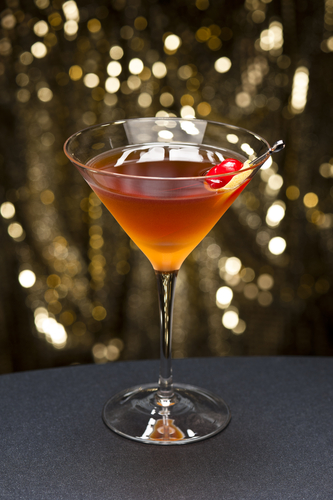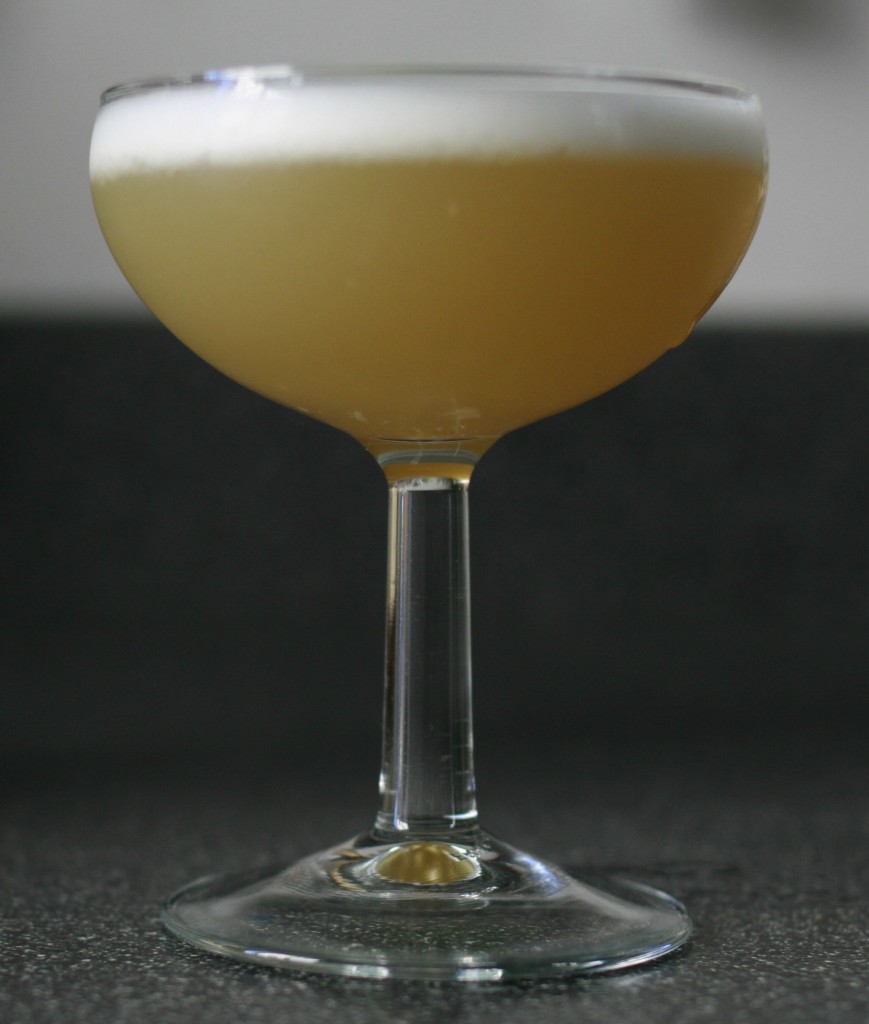Drink of the Week: The Whiskey Smash
 The Whiskey Smash is probably one of the clearest examples of a drink rescued from complete obscurity by the ongoing classic cocktail revival. Although the modern version featured in a growing number of retro-friendly bars differs enough from the recipe written up by cocktail pioneer Jerry Thomas in 1862 to be an entirely different cocktail, the more polished and slightly more elaborate version below is certainly a classic of sorts.
The Whiskey Smash is probably one of the clearest examples of a drink rescued from complete obscurity by the ongoing classic cocktail revival. Although the modern version featured in a growing number of retro-friendly bars differs enough from the recipe written up by cocktail pioneer Jerry Thomas in 1862 to be an entirely different cocktail, the more polished and slightly more elaborate version below is certainly a classic of sorts.
As it stands, the Whiskey Smash is a close relative of the Mojito and the (I swear upcoming) Mint Julep. It’s outstanding for a warm day or in a bar so crowded if feels like a warm day. Certainly if you’re a fan of whiskey, lemon, mint, and heavy muddling, this is your drink.
The Whiskey Smash
2-3 ounces whiskey (bourbon, rye, Canadian, etc.)
1 quarter lemon, cut into four or more pieces
5 or more mint leaves
2-3 teaspoons superfine sugar
3 dashes of bitters
1/2-3/4 ounce water (optional)
1 mint sprig (semi-optional garnish)
1 maraschino cherry (very optional garnish)
Combine your whiskey, lemon pieces, superfine sugar, mint leaves and, if you like, splash of water in a cocktail shaker. (The water is really only there to approximate the 1/2 to 3/4 ounces of simple syrup most recipes call for instead of sugar, but I found the results about the same whether or not I included it.)
Muddle it all rather intensely, paying special attention to give a good mushing to the lemon pieces — this is a “smash” after all. You can take it a bit easier on the mint if you like. Make sure, however, that your sugar is dissolved in the liquid, which should happen without too much effort if you’re using superfine sugar and not cheating with ordinary table sugar.
Add lots of ice — cracked or crushed ice is probably better — and shake vigorously. Strain into a well chilled old fashioned glass with a few ice cubes in it. Because of all the lemon, mint, and crushed ice you may have to exercise a bit more patience at the straining stage, but your forebearance will shortly be rewarded. If you’d like an extra dash of sweetness and color, add a maraschino cherry along with the semi-obligatory mint-spring.
****
I found the results remarkably consistent regardless of which whiskey I used, though I found using Buffalo Trace bourbon resulted in a slightly more mellow and interesting smash than the super-reasonably priced Evan Williams I picked up for a ten spot. 100 proof whiskeys seem to work well here, and I had good luck using my standby Rittenhouse Rye as well as the hard to find 100 proof Canadian Club I’m lucky enough to have. (You can buy it online here.) I also found that this one drink that worked very nicely not only with traditional aromatic bitters like Angostura, but also with the bottle of Fee Brothers Celery Bitters I recently picked up. (Speaking of revived classics, as I understand it, celery bitters pretty much disappeared between sometime in the middle of prohibition and, believe it or not, 2008.)
I’ve also noticed there’s something of a fetish among bartenders not to end up with bits of mint in the final, strained drink. It happened to me a lot of the time, and it wasn’t a problem either in terms of taste or aesthetics, in my view.
And just a reminder that you will really need a good, solid muddler suitable for lemon smashing as described so long ago in our guide to bar implements. If you don’t have one, you can improvise but you want something solid. A freshly washed hammer used with extreme caution, perhaps.
You can follow us on Twitter and Facebook for content updates. Also, sign up for our email list for weekly updates and check us out on Google+ as well.

 You’ve never heard of the today’s Drink of the Week for a very good reason. The Meyer-Canadian Semi Sour, as I’ve named it (any other suggestions?) is the first DOTW that is pretty much entirely my own variation on a
You’ve never heard of the today’s Drink of the Week for a very good reason. The Meyer-Canadian Semi Sour, as I’ve named it (any other suggestions?) is the first DOTW that is pretty much entirely my own variation on a  Sometimes you just go with a drink to match your mood, and Brain-Dusted is about how I feel this week as my man-flu of last week slowly drifts away. It’s also a great way for me to get rid of the cheap brand of absinthe I picked up a while back, only to find I
Sometimes you just go with a drink to match your mood, and Brain-Dusted is about how I feel this week as my man-flu of last week slowly drifts away. It’s also a great way for me to get rid of the cheap brand of absinthe I picked up a while back, only to find I  The next presidential/congressional election isn’t until next year, but politics is in the air as Republicans debate and the president makes his case. All things considered with the state of our union these days, that’s reason enough to take to strong drink,
The next presidential/congressional election isn’t until next year, but politics is in the air as Republicans debate and the president makes his case. All things considered with the state of our union these days, that’s reason enough to take to strong drink,  Sours are an entire family of cocktail which mostly utilize some combination of lemon juice and sugar. (The sour mix used by many bartenders is, in my experience, slightly revolting.). The Latin American favorite, the pisco sour, is probably a better known drink in many quarters these days, but the whiskey sour has been one of the
Sours are an entire family of cocktail which mostly utilize some combination of lemon juice and sugar. (The sour mix used by many bartenders is, in my experience, slightly revolting.). The Latin American favorite, the pisco sour, is probably a better known drink in many quarters these days, but the whiskey sour has been one of the 








